Top Liveaboard’s in Triton Bay
Highlights ⭐⭐⭐⭐⭐
Remote and well-preserved area
Stunning healthy reef
Wifi Available (Starlink 5G)
Diving Liveaboard (Nitrox Available)
Marine Biologist (Cruise Director)
Diving with Whale Sharks
Triton Bay is largely unexplored, making it an ideal destination for adventurers and discovery seekers. Its stunning underwater landscape features vibrant coral reefs that remain relatively untouched, fostering a rich biodiversity where divers can encounter vivid tropical fish, majestic manta rays, and gentle whale sharks in warm, nutrient-rich waters. Above the water, Triton Bay boasts wild, unspoiled nature with lush green hills and clear blue skies. With its serene beauty and adventurous spirit, Triton Bay offers a unique experience for those looking to explore the underwater wonders.
Diving in Triton Bay
Calico Jack visits Triton Bay in March, a time when the winds are particularly favorable for crossing the open waters. During this season, we offer two amazing 11-night dive cruises designed to provide access to the best dive sites in this stunning region, regardless of its remoteness.
Another remarkable aspect of the Triton Bay cruises with Calico Jack is that we cover both the best areas of Raja Ampat (Misool) and Triton Bay in one trip! Throughout the journey, we spend half of our time exploring the famous Misool archipelago before navigating to Triton Bay, where we will have the opportunity to meet whale sharks. The reverse trip starts from Kaimana and, after five days in Triton Bay, relocates to Raja Ampat for the rest of the cruise. It’s truly a “two-for-one” deal!
- Kaimana: This area is renowned for its incredible biodiversity, particularly for consistent sightings of gentle whale sharks. These magnificent creatures can often be seen gliding through the warm, nutrient-rich waters, making it an unforgettable experience for divers. The clarity of the water and the close encounters with whale sharks create a must-visit location for any diving enthusiast.
- Dorr Island Wreck: Near Triton Bay, this WWII wreck offers divers the chance to explore a significant historical site that has transformed into a vibrant habitat for marine life. The wreck is situated at varying depths, attracting divers interested in both history and underwater photography as it teems with colorful corals and fish.
- Pesisir Island: Known for its stunning reefs and diverse marine life, Pesisir Island provides excellent opportunities for macro photography and encounters with larger species. The rich underwater environment supports an array of marine creatures, making it a prime location for divers of all skill levels.
- Panggarang Island: This diving spot features lush coral gardens and an abundance of fish species, making it suitable for both novice and experienced divers. The vibrant underwater landscapes here are perfect for exploring and discovering the rich marine life of Triton Bay.
- Fakfak Islands: This archipelago is celebrated for its pristine coral reefs and thriving marine ecosystems, offering a more secluded diving experience away from the busier sites. Divers can enjoy a peaceful exploration of the underwater beauty while encountering diverse marine life, including unique fish species and stunning coral formations.
These dive sites in Triton Bay provide an incredible experience for divers of all levels, offering opportunities to see a variety of marine life while exploring some of the most beautiful underwater landscapes in the world.
This sample itinerary might be subject to change due to weather conditions.
Day 1: Arrive in Kaimana, where you’ll be picked up from your hotel and taken to the boat for a check dive in the afternoon.
Days 2-3: Dive in Triton Bay, known for its pristine coral reefs, vibrant fish schools, and migrating whale sharks. Highlights include:
- Whale Shark Bagan: Swim with local whale sharks, encountering them year-round.
- Larry’s Heaven: Experience stunning coral gardens and abundant fish life.
- Aiduma and Little Komodo: Explore incredible underwater biodiversity.
- Enjoy a beach BBQ party in Triton Bay.
Day 4: Dive in Namatote, rich in diverse fish life and beautiful corals, for three dives before navigating to Momon.
Day 5: Dive at Momon’s hard coral seamount, known for its healthy fish populations. In the afternoon, visit the beautiful Kita Kita waterfalls.
Day 6: Dive in Pulau Pisang, an archipelago with healthy corals and diverse marine life, including mantas and turtles.
Days 7-8: Explore Wayilbatan and Warokaraket in Misool, with highlights including:
- Day 7: Four dives at Wedding Cake and Four Kings, with kayaking opportunities in hidden lagoons.
- Day 8: Shadow Reef, known for its cleaning station for manta rays, and Boo Rock with its unique openings.
Day 9: Dive in the Fiabacet area, exploring Batu Kecil, Nudi Rock, and Whale Rock, showcasing extensive reef systems.
Day 10: Dive at Daram, featuring the stunning Andiamo reef and Candy Store, brimming with diverse marine life.
Day 11: Experience Balbulol with two dives, then spend the afternoon in a hidden lagoon, exploring further into the rocks. Depart for an overnight cruise back to Sorong.
Day 12: After breakfast and final farewells, disembark in Sorong, concluding your incredible diving adventure.
This sample itinerary might be subject to change due to weather conditions.
Day 1: Arrive in Sorong, where you’ll be picked up and taken to the boat. Set sail for Misool with approximately 12 hours of navigation.
Day 2: Dive in Daram, Misool, with four dives at stunning sites like Andiamo and Candy Store, known for their vibrant reefs and abundant marine life. Enjoy a night dive in Yilliet.
Day 3: Explore Yilliet with four dives in the Fiabacet area, featuring diverse coral gardens and notable dive sites like Batu Kecil, Nudi Rock, and Whale Rock. A night dive will conclude the day.
Day 4: Dive at Warokaraket, experiencing top-rated locations like Shadow Reef, where oceanic manta rays are frequently spotted. Explore Boo Rock and Yellit Kecil, known for its colorful nudibranchs.
Day 5: Dive three times in Wayilbatan, visiting the impressive Wedding Cake site and enjoying kayaking and paddle boarding in hidden lagoons. Overnight navigation to Pulau Pisang.
Day 6: Dive at the beautiful Pisang archipelago, known for its healthy corals and vibrant marine life. Overnight navigation to Momon.
Day 7: Dive three times at Momon, where diverse fish life and beautiful corals await. Early morning navigation to Namatote.
Day 8: Continue diving in Namatote with three dives, where large schools of fish thrive. In the afternoon, visit the Kita Kita waterfalls before heading toward Triton Bay.
Days 9-11: Dive in Triton Bay, a treasure trove of underwater beauty with eight dives at sites like Whale Shark Bagans, Larry’s Heaven, Aiduma, and Little Komodo. Enjoy a beach BBQ and discover rich marine life in this protected area.
Day 12: After breakfast and final farewells, disembark in Kaimana, concluding your extraordinary diving adventure.

Beyond Diving in Triton
The landscape of Triton Bay reminds us of Jurassic Park. Tall cliffs covered with thick vegetation and waterfalls flowing into the ocean create an unforgettable backdrop for your adventure. Being mostly a diving destination, Triton Bay can be explored by freedivers and snorkelers. Most dive sites have shallow parts, providing a stunning experience for anyone able to swim with a mask.
Kayaking amongst the carst lagoons of the Misool is another fantastic activity to engage in. We can also set up a beach hang-out to spend a lazy day under the umbrella. So, if you (or your partner) are not a diver, there are still plenty of exciting things to do on the Triton Bay cruise!
Triton Bay offers much more than just diving. The region is rich with opportunities to explore its breathtaking natural beauty above the water. Some of the most popular activities are:
-
Snorkeling: The calm, shallow reefs are ideal for snorkeling, allowing you to see vibrant corals, a variety of reef fish, and possibly even sea turtles.
-
Island Hopping: Discover the unique landscapes of Triton Bay’s islands. Highlights include stunning limestone cliffs and the tranquil, hidden lagoons that characterize the area.
-
Bird Watching: Triton Bay is home to several endemic bird species, making it a fantastic spot for birdwatchers. Look out for the colorful Wilson’s Bird-of-Paradise and enjoy early morning tours for the best sightings.
-
Cultural Visits: Engage with local communities by visiting traditional Papuan villages. This offers a chance to learn about their rich culture and perhaps pick up handmade crafts as souvenirs.
-
Kayaking and Paddleboarding: Navigate the clear waters of Triton Bay by kayak or paddleboard, exploring its hidden coves and mangrove areas for a unique perspective of the landscape.
The Raja Ampat – Kaimana cruise starts from Sorong and finishes in Kaimana. The Triton Bay – Raja Ampat cruise starts from Kaimana and finishes in Sorong. For your domestic flights, we suggest choosing Garuda Indonesia, but other carriers are acceptable as well. It’s advisable to book your flights in advance, especially during peak seasons.
Our driver will pick you up from the airport or the hotel on the first day of the cruise. The hotel pick-up is usually between 9 and 9:30 am. We will drop you off at the airport or the hotel on the last day of the cruise. They will assist you with your luggage and transfer.
Calico Jack will leave from the harbour before noon. All guests are required to be on board before 10 am. For the remote areas, we advise arriving one day in advance to avoid being late for the cruise and get some rest after the long travel.
Our last dive will be at 12 p.m. on the day before last. We will arrive at the harbour in the late light of the day before the last. The departure from the boat is planned for after breakfast (around 11 a.m.). Yet, if you need to take an early morning flight, we can drop you off any morning. However, for the early departures, please mind that you will need to skip the last dive at noon of the previous day.
Health & Visa Requirements: Check if you need a visa for Indonesia and ensure your passport is valid for at least six months. Most travellers can obtain a visa on arrival, but you can also apply for an e-visa online to streamline the process. This visa is valid for 30 days and costs 500.000 IDR (EUR 33).
Packing Essentials: Bring lightweight, breathable clothing suitable for tropical climates and reef-safe sunscreen to protect the vibrant marine environment. We provide towels and amenities. However, if you have particular product preferences, please grab your own
Reliable Travel Agent
Vifa Holidays Indonesia has supported international travel agents and local boat and resort operators for over 19 years. They ensure that you enjoy a hassle-free travel experience in one of the world’s most diverse and captivating diving destinations.
Vifa Holiday Indonesia provides a wide range of services designed to cater to all travel needs:
- Travel Planning
- Domestic and International Flight Bookings
- Airport Assistance
- Accommodation Arrangements
- Transportation Services
- Tours and Excursions
Please contact Vifa’s team for enquiries on your best flight route by emailing travel@vifaholidayindonesia.com or visiting their website, www.vifaholidayindonesia.com.
WhatsApp: Theo +62 812 4262 7110
Triton Bay features a tropical climate with stable temperatures year-round, typically ranging from 26°C to 30°C (79°F to 86°F). The region experiences distinct wet and dry seasons: the wet season runs from November to March, while the dry season spans from April to October.
Best Time to Visit
The optimal time for diving in Triton Bay is during the dry season when the seas are calm and visibility is at its best. Although the dry season offers excellent diving conditions, the presence of whale sharks can be enjoyed throughout the year, making Triton Bay a sought-after destination for marine enthusiasts regardless of the season.
Packing Tips
Visitors should pack light, breathable clothing suitable for tropical weather. During the wet season, it’s advisable to bring waterproof gear and quick-drying fabrics. Additionally, don’t forget essentials such as reef-safe sunscreen, insect repellent, and a good hat to protect against the sun.
Exploring Triton Bay
A Diverse and Thrilling Landscape
Triton Bay's landscape is as diverse as it is stunning. From lush tropical islands to vibrant underwater ecosystems, there’s something for every explorer. The region’s rich marine life has captured the attention of divers and marine enthusiasts alike, leading to its recognition as a premier diving destination. Read More




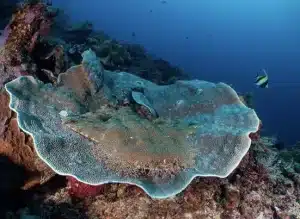
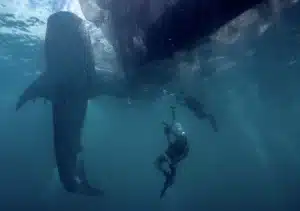
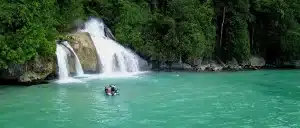






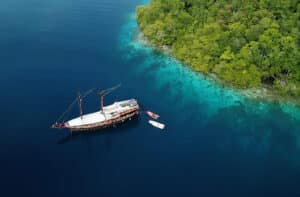


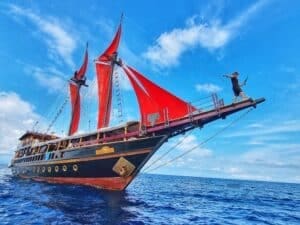
Triton Bay Schedule
Triton Bay Liveabaord – Calico Jack
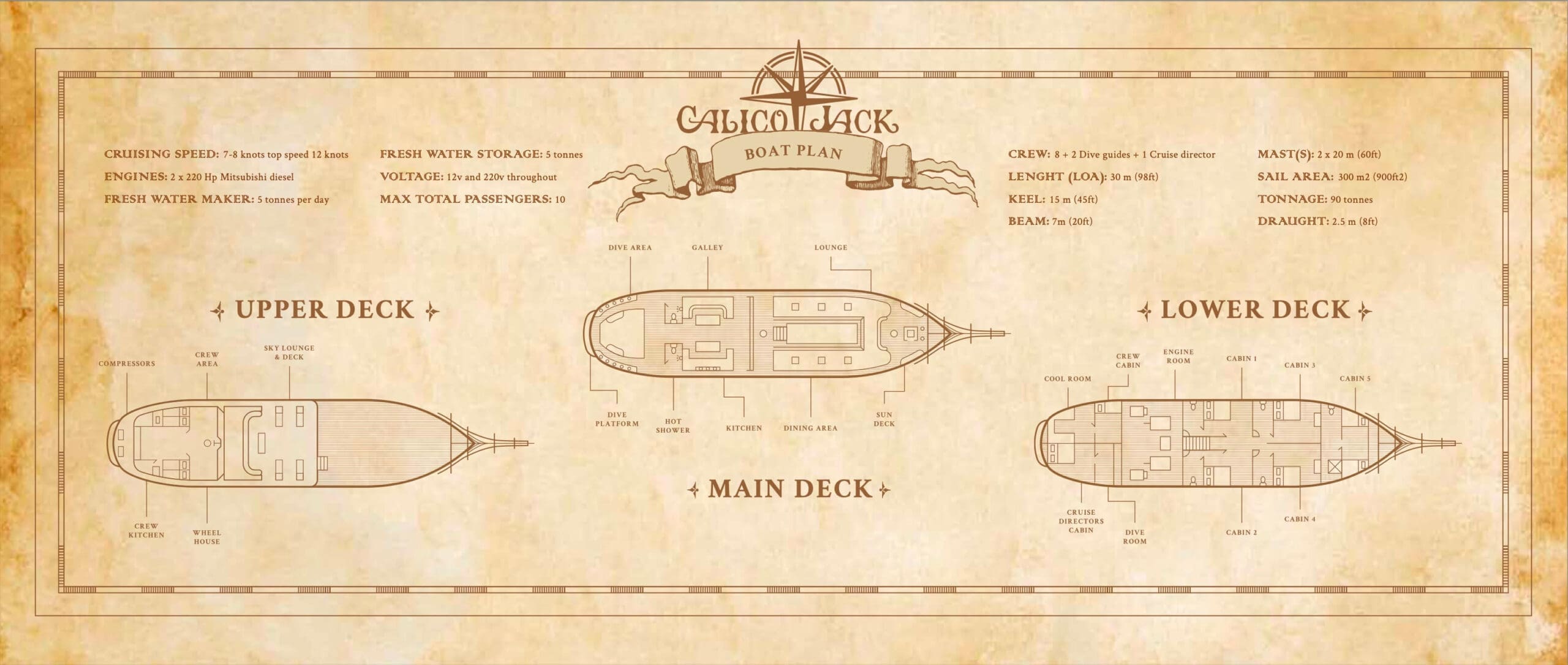
Welcome aboard Calico Jack Liveaboard, a traditional Indonesian Phinisi schooner that offers luxury diving expeditions in the heart of Indonesia’s Coral Triangle. Our beautifully crafted 30-meter wooden vessel, built on the beaches of South Sulawesi, combines the ancient traditions of the Bugis shipbuilders with modern amenities.
The vessel comfortably accommodates up to 10 guests across five spacious cabins, all featuring en-suite bathrooms and air conditioning. Every cabin is skilfully decorated with traditional wood carving.
- 2 Convertible Cabins (Cabin #1 & #2): Can be arranged as double or twin beds, perfect for flexibility.
- 2 Double Bed Cabins (Cabin #3 & #4): Spacious and ideal for couples.
- 1 Twin Cabin (Cabin #5): Designed for solo travelers or friends sharing.
- Air Conditioned Cabins
- En-Suite Bathrooms
- Non Smoking Rooms
- King-size beds
- Fans and ventilation holes in every cabin
- Daily Housekeeping
- Power Socket Adapters
- Hairdryers
Calico Jack is the “Beast of the sea.” Spacious and solid, it provides a temporary home for ten guests and ten crew.
The crew area is on the top deck and well separated from the guest zone, so the crew and the guests enjoy privacy.
All common facilities are situated on the main desk. The Diving area is at the back of the boat and has all the necessary equipment for efficient and safe diving. We have two speedboats to create a comfortable 1:5 group ratio to bring our guests around.
The kitchen is a space of magic and preparation of fresh, tasty and nutritional dishes. It also offers space for a charging station and can be used for dining during heavy rains. However, the central area is located at the front of the boat. It consists of a large dining table with a comfy sitting around it and a spacious sun deck with three sofas and a few beanbags. The sun desk is the best place to read a book, relax after a long diving day, or snooze while navigating.
Another shared area is an observation deck on the upper part of the boat. A sizeable, cosy sofa and several sunbeds are perfect for sunbathing or stargazing.
- Sun deck with sofas
- Diving platform
- Observation deck with sunbeds
- Lounge area with bean bags
- Outdoor Dining
- Bar & BBQ Area
- Book and movies library, board games
- Outside showers ans Separate rinse for u/w camera
- 2 Zodiac/Dhoni
- Camera Station
- Kayaks and SUP-boards
- Electric sockets CEE 7 standards: 220 Volt
- Projector screen
- Sound system with WiFi connection
Calico Jack was built for a comfortable adventure in remote areas. We currently have two guaranteed departures of per-cabin trips a month.
We also have dates available for charter bookings. For charter bookings, we can help you create the best itinerary, adding must-visit dive spots and in-land activities according to your preference. We can also help you with flight tickets and before and after- cruise travel arrangements.
Our Cruise Director is a Marine Biologist, so you may expect some colourful and informative presentations along the cruise.
- Available for Charter and per-cabin
- Available for retreats
- Customisable Itinerary
- Customisable Menu’s
- Land Excursions
- Beach set up
- Free Internet Wi-Fi (Starlink)
- Audio & Video Entertainment
- Laundry Service
- Diving
- Snorkelling
- Cruising speed: 7-8 knots top speed 12 knots
- Engines: 2 x 220 Hp Mitsubishi diesel
- Fresh water maker: 5 tonnes per day
- Fresh water storage: 5 tonnes
- Voltage: 12v and 220v throughout
- Max total passengers: 10
- Crew: 8 + 2 Dive guides + 1 Cruise director
- Length (LOA): 30 m (98ft)
- Keel: 15 m (45ft)
- Beam: 7m (20ft)
- Mast(s): 2 x 20 m (60ft)
- Sail area: 300 m2 (900ft2)
- Tonnage: 90 tonnes
- Draught: 2.5 m (8ft)
- 2 x Life raft: cap. 20 + pax
- Life jacket(s): 20
- Life ring buoy(s) x 5
- Fire extinguishers x 12
- EPIRB
- Flares
- Oxygen tanks
- First Aid medical supplies
- Satellite phone
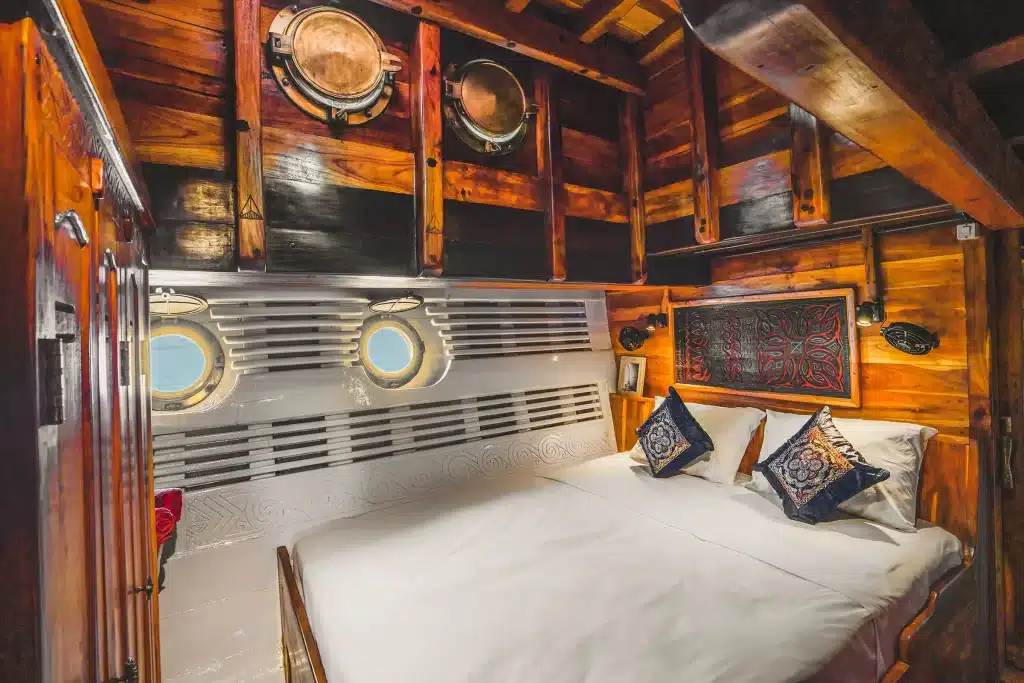
Calico Jack cabin
Calico Jack cabin
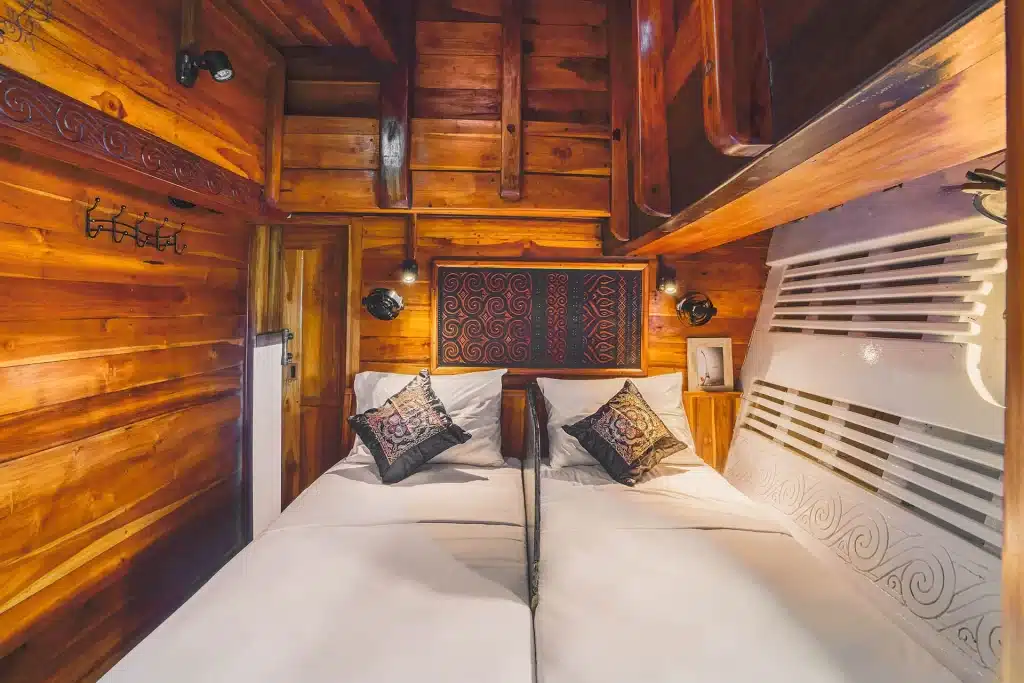
Calico Jack Double Converted to Twin Cabin
Calico Jack Double Converted to Twin Cabin

Calico Jack Double Cabin
Calico Jack Double Cabin
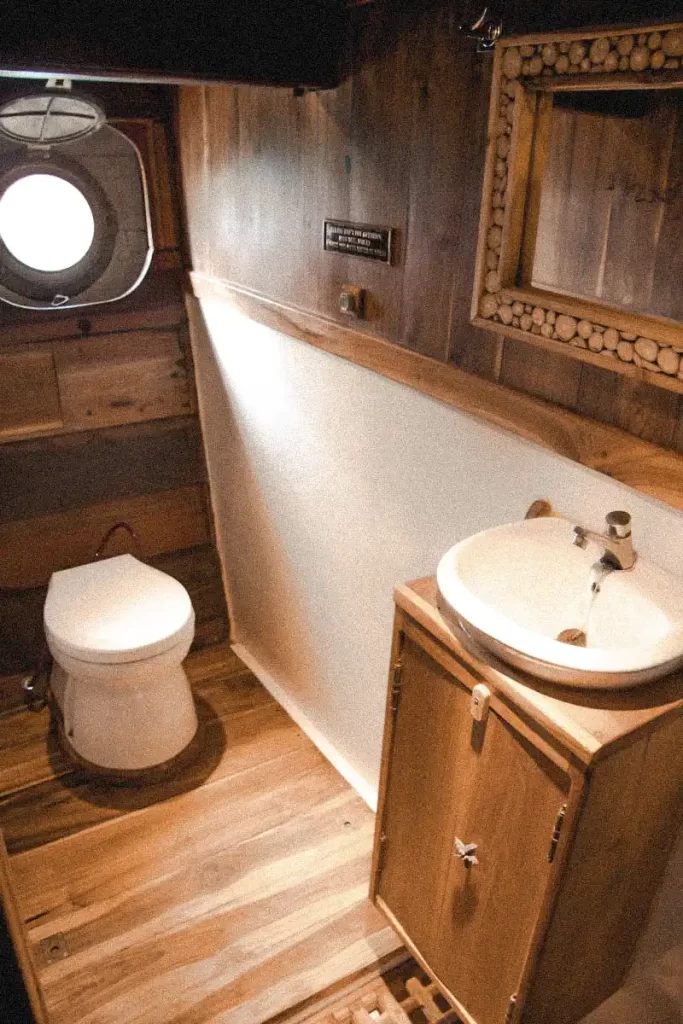
Calico Jack Bathroom
Calico Jack Bathroom
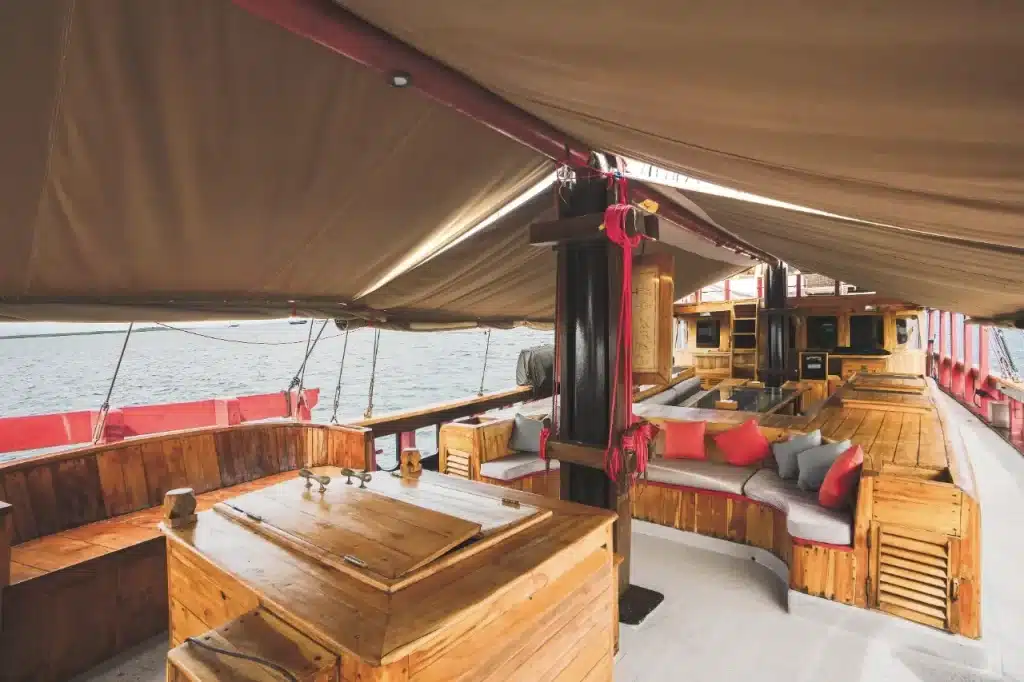
Calico Liveaboard
Calico Liveaboard

Twin Cabin Calico Jack
Twin Cabin Calico Jack
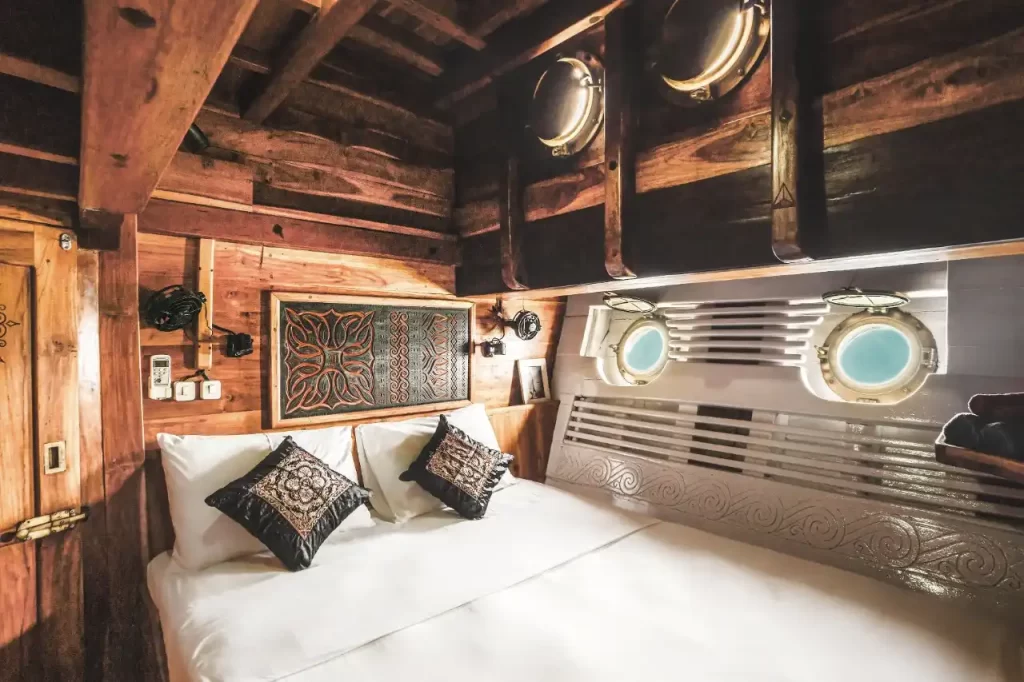
Double Cabin Calico Jack
Double Cabin Calico Jack
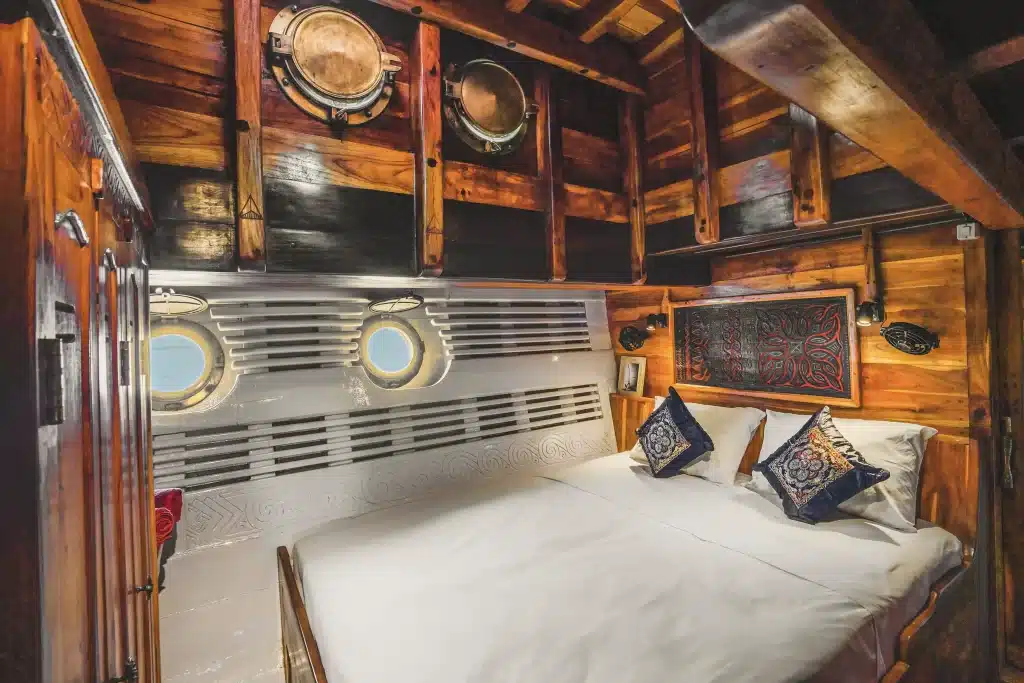
Double Cabin Calico Jack
Double Cabin Calico Jack
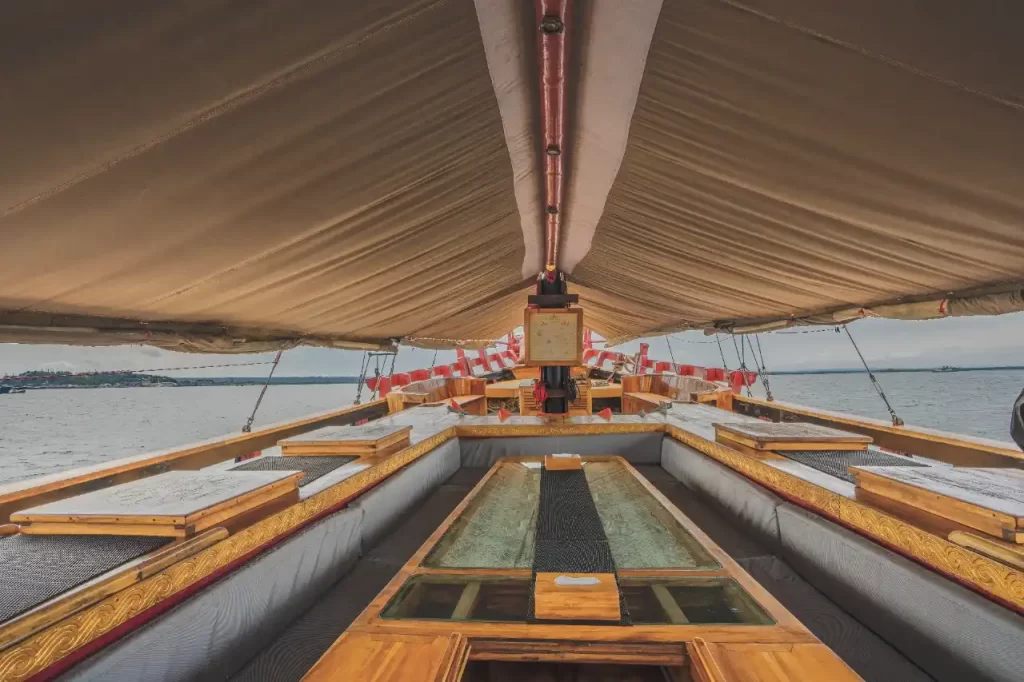
Calico jack Liveabaord Deck
Calico jack Liveabaord Deck

Double Cabin
Double Cabin
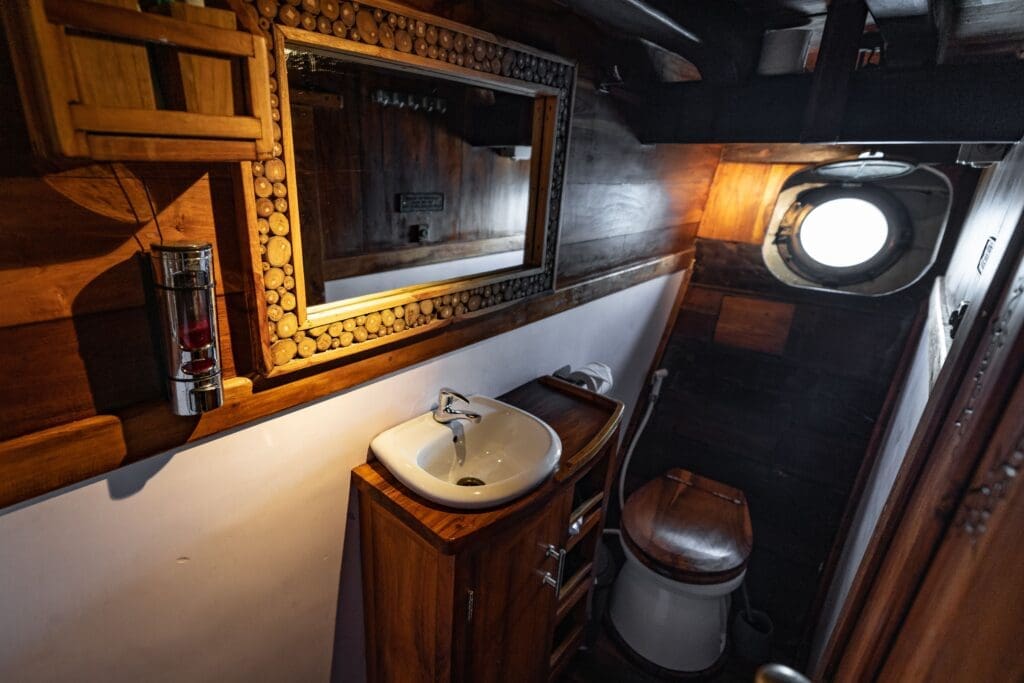
Ensuite
Ensuite
Book Your Raja Ampat Liveaboard Adventure
Don’t miss the chance to explore one of the world’s most stunning marine environments. Contact Calico Jack Charters today to book your liveaboard adventure.



